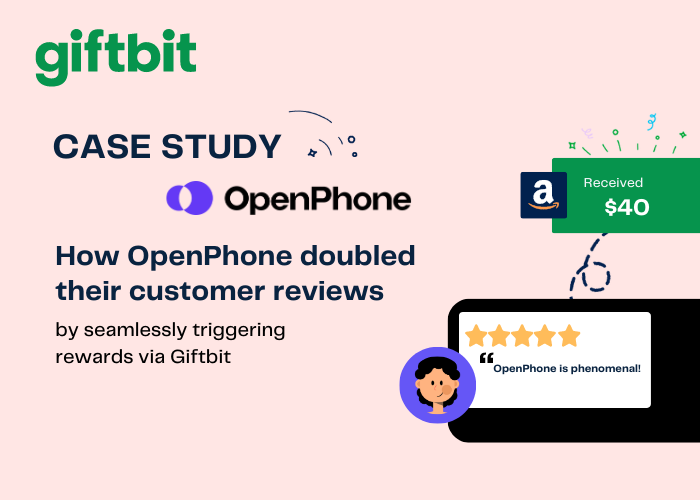Well-executed incentives can pay off for your market research. Executed poorly, however, and incentives can be an expensive endeavor that frustrate respondents and researchers.
Here are a few best practices to help you create the best incentive experience and get the most impact from your market research:
1. Set expectations for delivery
Respondents want to know how quickly they can expect their incentive.
You can reduce your support costs for these inquiries and improve the respondent experience by setting clear expectations around when and how an incentive will be delivered.
If respondents need to pick-up the incentive, where and when does this happen? Provide clear directions and maybe even a map.
For digital gift cards, let them know when can they expect to receive the incentive. Will it be delivered immediately? Should they expect an email in three days? A month?
For digital delivery, it is also important to understand if your third-party provider has any bottlenecks—are incentives delivered on demand or do they take at least a business day to process?
Communicate clearly about incentive delivery to keep respondents happy and engaged. As always, under promise and over deliver.
2. Pre-test, test, test again, then re-test
Different appeals and incentives will work for different groups. Understanding what motivates your audience is vital to getting the greatest return on your market research investment.
The effort it takes to test which appeals and incentives best motivate respondents will take time, but an optimized response and engagement rate is well worth the energy.
Consider experimenting with different incentive values, types, frequencies, and messages.

For large surveys, pretesting a few options on a small subgroup can significantly impact results and actually help you predict likely response and engagement.
For longitudinal studies or panels, ongoing optimization will maintain panel health and keep your respondents engaged and participating.
Qualtrics has a great post on some metrics you can use to help you get started.
3. Base your experiments on theory
Experimentation and measurement is required to understand how incentives will perform for you specifically. That said, you don’t have to start out simply guessing about what might work. The best experiments are built upon existing theory.
For example, social exchange theory describes how how people decide whether the costs of an exchange are worth the rewards. Another example is the norm of reciprocity, which describes how we experience both social and self pressure to respond to any action by making an equivalent gesture in return.
These are two great starting places for your hypotheses.
Further, a strong theory behind your experiment makes it far more likely that your results will be valid and repeatable—not just the result of random chance.
4. Use variable incentives to build habits
If you are looking for repeated engagement, either from a panel or some other group, the best way to build the habit of response is to use variable incentives.
There are two primary ways to vary an incentive: value and frequency.
Value
Varying value will either mean intermittently raising the incentive value or offering the possibility of a larger reward after the behavior is performed.
Randomly increasing the value of an exchange is great way to build a habit. We crave novelty. However, don’t just increase the incentive for the same old task—make the entire exchange novel and of greater value.
It can be a different type of research or longer in duration. Maybe it isn’t research at all; maybe this time it’s referring a friend to the panel or signing up for a partner program.
Combining a smaller promised incentive with a chance at a much larger reward is also a great example of varying value—participation earns a guaranteed $5 gift card, but you have a chance at getting a $100 gift card instead. This can dramatically improve the perceived value of the exchange while building a strong habit of response.
Frequency
Varying incentive frequency means that an incentive is only provided some of the time.
It turns out that variable incentive frequency is much more effective at building a habit. Slot machines and email are both an examples of habit-forming activities with variable incentives.
One challenge with this tactic is that the perceived value of the offer can be reduced, which can negatively impact satisfaction and initial participation rates.
The core of what makes a variable incentive work is the joy of novelty. Aim to create surprise and delight rather than predictably changing the incentive for every fifth engagement.
5. Create a positive incentive experience
An incentive is part of the overall market research experience. It can make or break how respondents behave after participating.
The risks of a poor incentive experience go well beyond the churn for panels and longitudinal studies. Companies face customer attrition, negative word-of-mouth, and increased support costs.
The rewards of a positive incentive experience can include increased engagement, participant advocacy, new and more loyal customers, great word-of-mouth, lower support and overhead costs, lower churn, etc.
A strong incentive is simple, accountable, and automated.

Claiming an incentives should be easy for participants. There is no reason they should have to create an account or download an app. There should be clear instructions on how to get and redeem their incentive. And if they have any trouble, there should be support available.
Delivery should clearly identify itself as the promised incentive from your company. Include your logo and branding if possible. Branding serves as a visual signal that the communication is legitimate. And make sure you are able to track your incentives to audit delivery and engagement.
When giving in large volumes, automate the process to dramatically reduce turnaround time and overhead. The right tools will let you add personalization such as recipient name and a custom message. Advanced automation could mean building into an API for greater flexibility and speed.
These best practices are just some of the most impactful we’ve come across. If you have best practices of your own, we’d love to hear from you in the comments or on social media---send us a tweet at @Giftbit.

How To Increase Survey Response Rates
In fact, the success of your research surveys will often hinge on your response rates. High participation ensures a diverse and robust...

How Giftbit Helped A Business Communication App Double Its Reviews
OpenPhone doubled their customer reviews and unlocked seamless sending with a simple Giftbit + Zapier connection.
Read more








